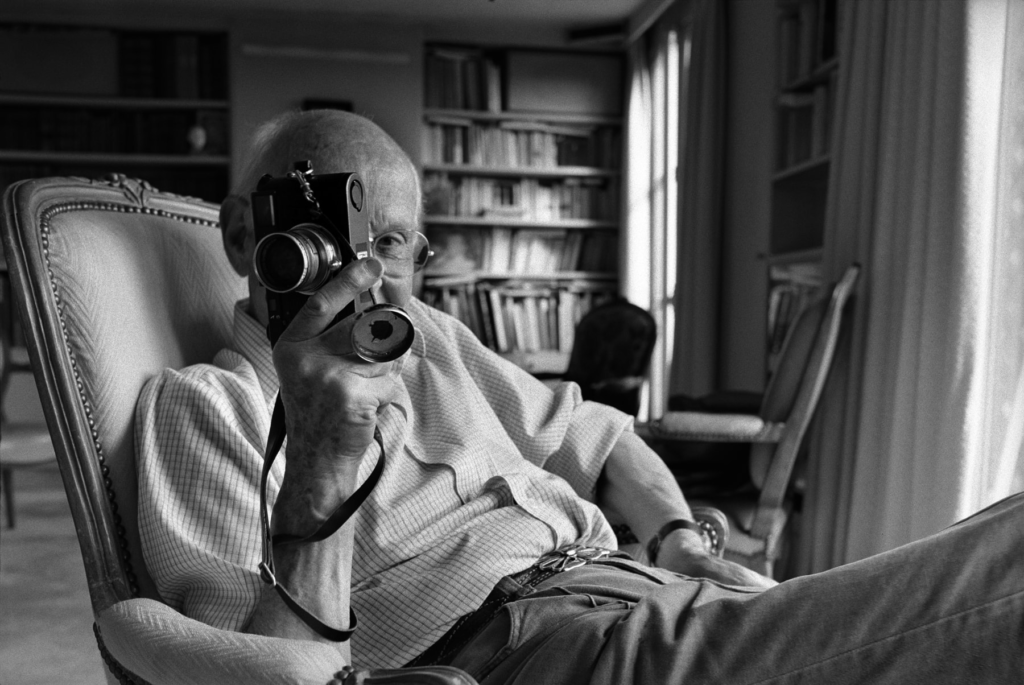
Henri Cartier-Bresson was a French photographer who is considered to be one of the fathers of photojournalism and masters of candid photography. He sought to capture the ‘everyday’ in his photographs and took great interest in recording human activity. He pioneered the genre of street photography, and viewed photography as capturing a decisive moment, which he later wrote a book about. He was influenced by Surrealism and began his career in film working with renowned French director, Jean Renoir as second assistant director. He was born on the 22nd of August, 1908 In Chanteloup-en-Brie, France and passed away on the 3rd of August, 2004 in Céreste, France.
He came from quite a wealthy family and since his parents were providing financial support, Henri pursued photography quite freely. His father assumed that his son would take up the family business, but Henri was strong-willed and also feared the idea. In 1929, Cartier-Bresson’s air squadron commandant placed him under house arrest for hunting without a licence. Cartier-Bresson met American expatriate Harry Crosby, who persuaded the commandant to release Cartier-Bresson into his custody for a few days. The two men both had an interest in photography, and Crosby presented him with his first camera.
Cartier-Bresson ended up falling into an intense sexual relationship with Caresse Crosby (Harry Crosby’s wife) however, two years after Harry Crosby died by suicide, Cartier-Bresson’s affair with Caresse Crosby ended in 1931. After reading the book, Heart of Darkness, which gave him the idea to try and find adventure in Côte d’Ivoire, Africa. He survived by shooting game and selling it to local villagers. From hunting, he learned methods which he later used in photography.
He acquired the Leica camera with a 50 mm lens in Marseilles that would accompany him for many years. The anonymity that the small camera gave him in a crowd or during an intimate moment was essential in overcoming the formal and unnatural behaviour of those who were aware of being photographed. He enhanced his anonymity by painting all shiny parts of the Leica with black paint. In the beginning, he did not photograph much in his native France. It would be years before he photographed there extensively. Cartier-Bresson’s first photojournalist photos to be published came in 1937 when he covered the coronation of King George VI and Queen Elizabeth.
“For me the camera is a sketch book, an instrument of intuition and spontaneity, the master of the instant which, in visual terms, questions and decides simultaneously. In order to ‘give a meaning’ to the world, one has to feel involved in what one frames through the viewfinder. This attitude requires concentration, discipline of mind, sensitivity, and a sense of geometry. It is by economy of means that one arrives at simplicity of expression.”

The Decisive Moment
The Decisive Moment is a book by Henri Cartier-Bresson, a French photographer who is credited with pioneering modern photojournalism. The book is a collection of his best-known photographs, accompanied by his thoughts on photography and the creative process. The title refers to the idea that photography captures a single moment in time, and that the photographer’s job is to be in the right place at the right time to capture that moment. Cartier-Bresson believed that the best photographs were those that were taken spontaneously, without any preconceived ideas or planning. He called this the “decisive moment,” and believed that it was the key to creating truly great photographs.
